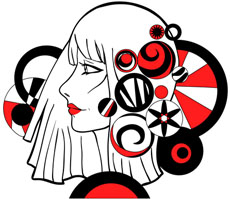Bombarded by messages, images and cries to buy one product over another, the consumer is quickly overwhelmed by information. Added to this overload, many people also check social media sites hourly and have news articles delivered to multiple email addresses. Getting your message heard in all this noise is growing increasingly harder. Your ad design must grab the consumer’s attention in a fraction of a second. Many elements play a role in creating an effective advertisement but the use of proper typesetting can turn a dull ad into one that stands out from the rest.
Some history
Font design is an old art, dating to the 15th century and the invention of the Guttenberg Printing Press. As technology evolved, the ease of producing different fonts increased and continues today. The original purpose for creating varying fonts was not that far flung from modern standards—to differentiate between sections of text, make the content easier to read and later on, for design purposes.
Type as graphic element

While ad design is largely about images, the use of fonts as a graphic element is an easy and cheap solution for making an advertisement stand out. Graphic design and desktop publishing software ships with several different fonts. Selecting choices for typesetting design is as simple as changing the font via the font dialog box. Pick a different type and view it on the screen until you find the one that meets your needs.
Type is classified as serif and sans serif, meaning with a small stroke emanating from the end of each letter or without that stroke. Old school layout artists use sans serif, such as Helvetica or Arial, for headlines and titles and serif fonts like Times New Roman or Garamond for the content. Studies have shown that when reading large volumes of text, a serif font is easier to read. You can throw those rules out the window when using typesetting for ad design.
That is not to say choose a font that is hard to read. Many of the cursive, script fonts that are elegant and resemble handwriting are not easy to read, especially at a quick glance. Fonts have character. Some are strong and bold, others delicate and classy. Decide what kind of message you want to convey and what type of font will work with the images you are using.

Type selection can drive you mad so pick several different fonts and print each one with the font name. Place them side-by-side and pair them down to a few good candidates. Then ask some co-workers for feedback.
Colors are a consideration also. If the type is placed over an image, make sure you can read it. Black text over a dark image will be unreadable—the same with white or light colors. Use bold or contrasting colors to grab attention to your typesetting choices.
Make ad design fun and creative. When the right combination of type, images and colors is met, your advertisement will attract the attention it deserves.
– ArtworkAbode




